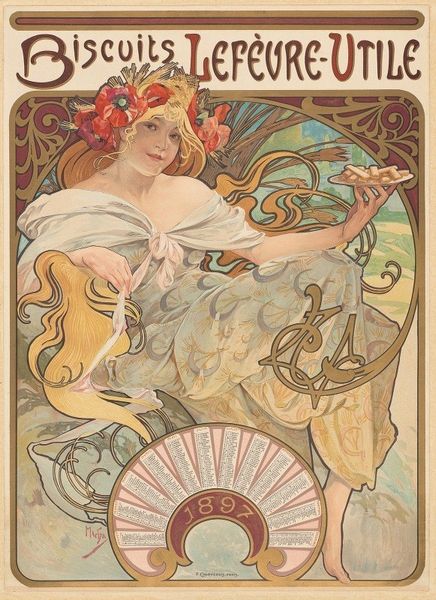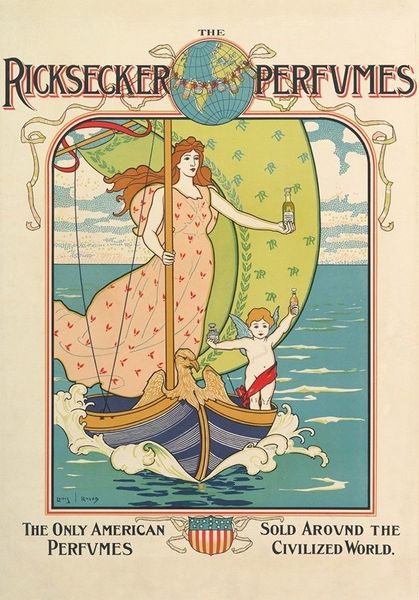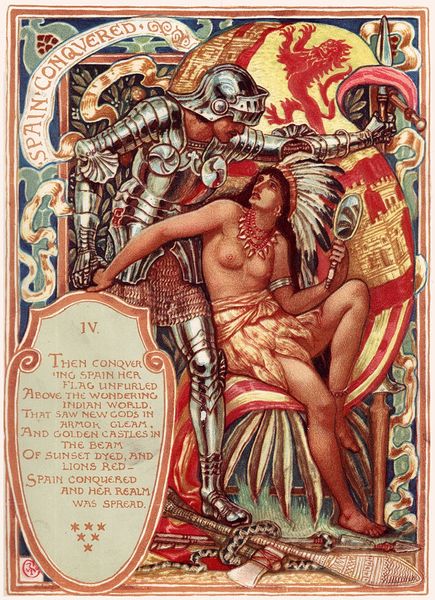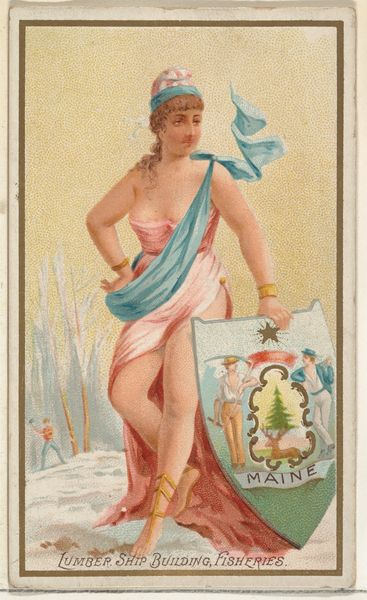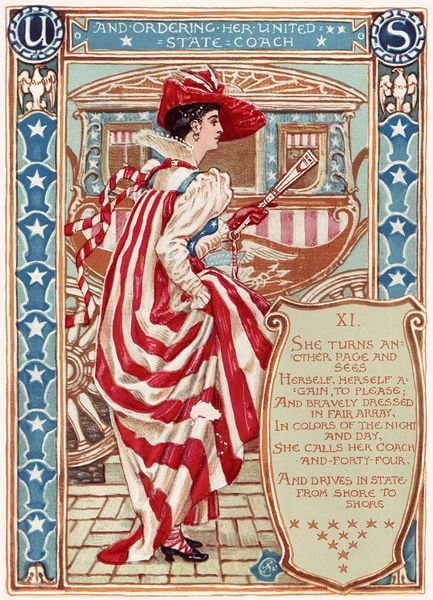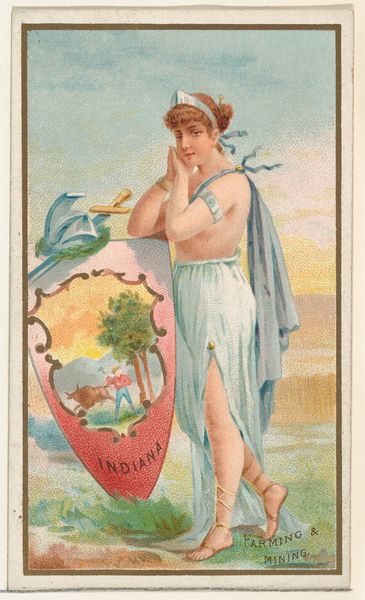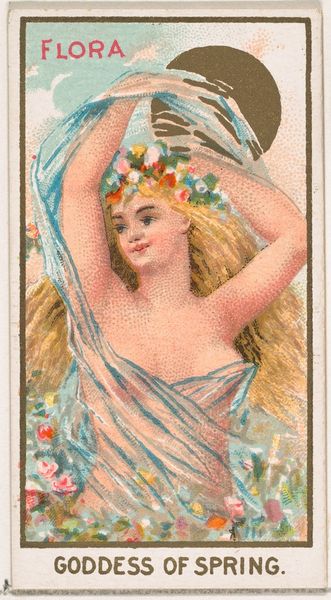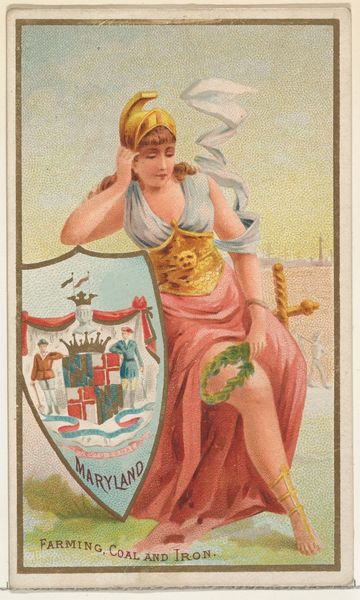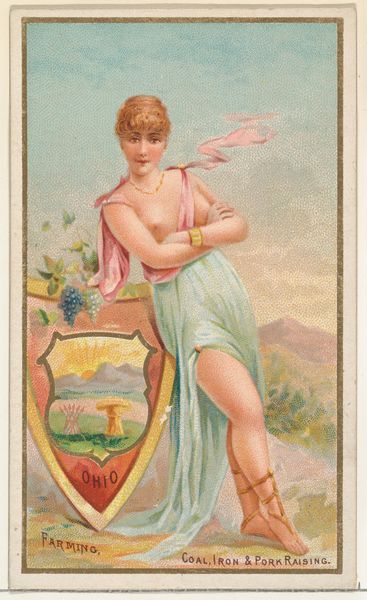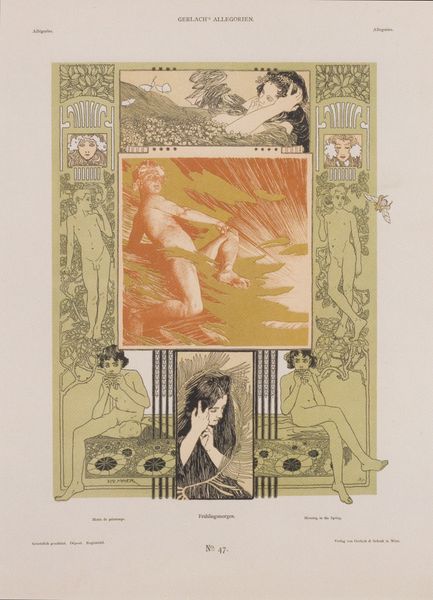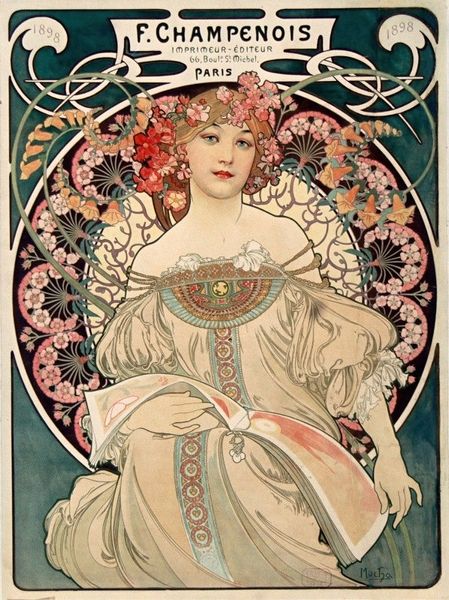
Copyright: Public domain
Curator: This is Walter Crane's "Miss America," created in 1893. It's quite striking. Editor: Indeed. It exudes an air of fantasy; I can almost feel the weight of the materials in the illustration--the paper stock, inks, the quality of line reproduction--all pointing to late 19th-century printmaking practices. What was Crane trying to convey through materiality and process? Curator: Crane was deeply invested in socialist ideals and the Arts and Crafts movement. This image, while seemingly romanticizing Native Americans, fits within the late 19th-century fascination with exoticism and the “noble savage.” It reflects the historical context of colonization and the prevailing attitudes toward indigenous populations. He was also commenting, perhaps critically, on America's self-image at the time, presenting a feminized and idealized representation of the nation's origins. Editor: The composition draws you in: there’s text, figure, and decorative frame integrated seamlessly. It is very intentional. I notice, too, how he positions the "Indian Maid" with a bow and arrow, poised yet ornamental. Curator: Right. Her attire—or lack thereof—speaks to a kind of imagined primitivism popular at the time. These images contributed to shaping and solidifying certain narratives about America's relationship with its indigenous people and its colonial past, which were also reflected and formed by institutions and cultural power. Editor: I can see that now. And, as the Industrial Revolution took hold, there were corresponding cultural shifts, with debates around industrialism's impact on artistic production. Crane, deeply committed to socialist causes, infused his artworks with political undertones that questioned existing socioeconomic hierarchies. The very act of choosing his materials was a choice to align with certain ideologies. Curator: Precisely. So the piece functions on multiple levels, reflecting both an artistic vision and complex social and political commentary relevant to its era, highlighting the contradictions of a rapidly changing America, while his craft demonstrates an intimate connection to art-making rooted in cultural ideology and values. Editor: Thanks, this helps me think differently about this particular piece!
Comments
No comments
Be the first to comment and join the conversation on the ultimate creative platform.
